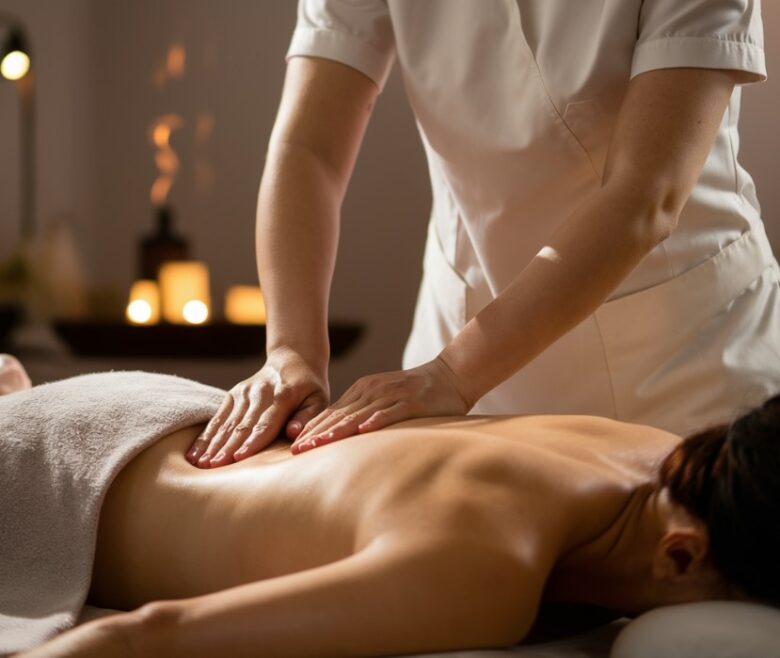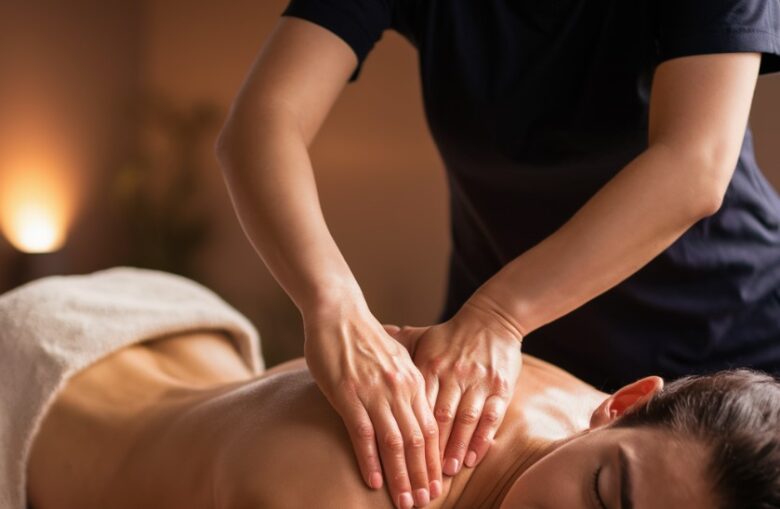Have you ever walked out of a massage therapy session feeling like a new person, only to find that nagging back pain creeping back in a day or two later? Many people can relate to the bittersweet experience of temporary relief followed by frustration. After a visit to a trusted spa or massage clinic, they may unwittingly engage in habits that cancel out the benefits of their session.
These missteps often stem from a lack of awareness about effective post-treatment care. Understanding how mistakes in this area can exacerbate discomfort is essential for making the most of each treatment and achieving long-lasting relief.
Key Takeaways
- Post-treatment hydration is crucial for recovery.
- Avoid jumping back into intense physical activities immediately.
- Listen to your body’s signals and allow time for recovery.
- Learn about effective post-massage care routines.
- Maximize the benefits of massage (마사지) therapy through mindful habits.
Post-Massage Discomfort and Its Causes

Post-massage discomfort can be a perplexing experience for many individuals. It is essential to understand what to expect following a massage and the factors contributing to increased back pain. A comprehensive approach to Post-Massage Care can enhance the overall benefits of the massage. Emphasizing the importance of a proper Treatment Aftercare Routine can help ensure a smoother recovery and continued Massage Wellness.
What to Expect After a Treatment
After a massage, individuals may experience various sensations. It is not uncommon to feel soreness or tightness, somewhat akin to post-exercise symptoms. This discomfort often results from muscle manipulation, which promotes blood circulation and initiates the healing process. In some cases, temporary inflammation may arise, leading to a sense of tightness in the targeted areas. Overall, individuals should embrace the day following their treatment as a crucial time for restful recovery.
Common Reasons for Increased Back Pain
Several factors can contribute to heightened back pain after a massage. These include:
- Dehydration levels before and after the treatment
- Pre-existing muscle tension or tightness
- Individual sensitivity to muscle manipulation
Maintaining open communication with the treatment therapist about pain levels and comfort can lead to tailored techniques during the session, ultimately reducing post-massage discomfort. Recognizing soreness as a sign of attention areas is vital for effective recovery. Implementing a proper Treatment Aftercare Routine can help manage discomfort and improve overall body wellness.
Things You’re Doing After a Treatment Wrong
Post-treatment care plays a crucial role in maintaining the benefits gained from a session. Many individuals unknowingly fall into the trap of common Massage Aftercare Mistakes that can hinder their recovery process. Understanding these errors is key to Maximizing Treatment Benefits and making the most of the experience.
Neglecting Post-Treatment Hydration
A significant error often made is neglecting to stay hydrated after a treatment. Water consumption is essential in flushing out toxins released during the session. Inadequate hydration can lead to increased soreness and muscle tension, counteracting the relaxation achieved from the treatment. Ensuring sufficient water intake can be one of the most effective treatment Dos and Don’ts individuals can follow for optimal recovery.
Jumping Back into Intense Activities
Another mistake includes returning to intense physical activities immediately after a massage. Engaging in strenuous workouts or demanding tasks can put unnecessary strain on already relaxed and sensitive muscles. This abrupt shift can exacerbate discomfort rather than alleviate it. Instead, incorporating gentle stretching and allowing for rest before reintroducing physical activity fosters a more effective recovery environment, aligning with the principles of Maximizing Treatment Benefits.
Conclusion

In summary, while treatments offer an excellent way to relieve back pain and enhance overall wellness, the impact of this treatment can be hindered by improper post-session practices. Emphasizing effective Massage Recovery Tips can make a significant difference in a person’s experience and result. By focusing on critical aftercare strategies such as hydration, rest, and a gradual return to daily activities, individuals can maximize the benefits of their treatment.
Understanding Massage Etiquette is equally important, as it not only respects the therapist’s expertise but also signifies a commitment to one’s own well-being. Simple acts of self-care following a massage can yield profound benefits, transforming what could be a fleeting moment of relief into lasting wellness. By avoiding common pitfalls and staying attuned to their bodies, clients can unlock the full potential of massage therapy for long-term pain management.
Ultimately, by being proactive and attentive, it is possible for anyone to turn their massage experience into a journey of sustained health and vitality. Embracing these principles of Massage Self-Care ensures that the path to recovery is not just a momentary escape, but a foundational step toward a more resilient and pain-free life.
FAQ
What should I do immediately after a massage?
It’s essential to stay hydrated and give your body time to rest. Avoid rushing back into strenuous activities and consider doing gentle stretches to ease muscle tension.
Is it normal to feel sore after a massage?
Yes, post-treatment soreness can be common due to muscle manipulation. This soreness is usually temporary and may indicate areas that need additional attention in future sessions.
How much water should I drink after a massage?
It’s recommended to drink at least 8 ounces of water immediately after a massage and continue to hydrate throughout the day to aid in muscle recovery and flush out toxins.
What are common post-massage mistakes to avoid?
Common mistakes include neglecting hydration, jumping back into high-impact activities, and ignoring your body’s signals. It’s crucial to listen to your body and allow it to transition effectively post-treatment.
How can I maximize the benefits of my massage?
To maximize benefits, maintain hydration, rest after the session, and gradually reintroduce physical activities. Engaging in self-care routines and effective post-treatment care can also enhance recovery.
Should I communicate any discomfort to my massage therapist?
Absolutely! Consistent communication with your therapist regarding comfort levels and existing pain can help tailor the treatment to minimize discomfort and enhance overall wellness.

